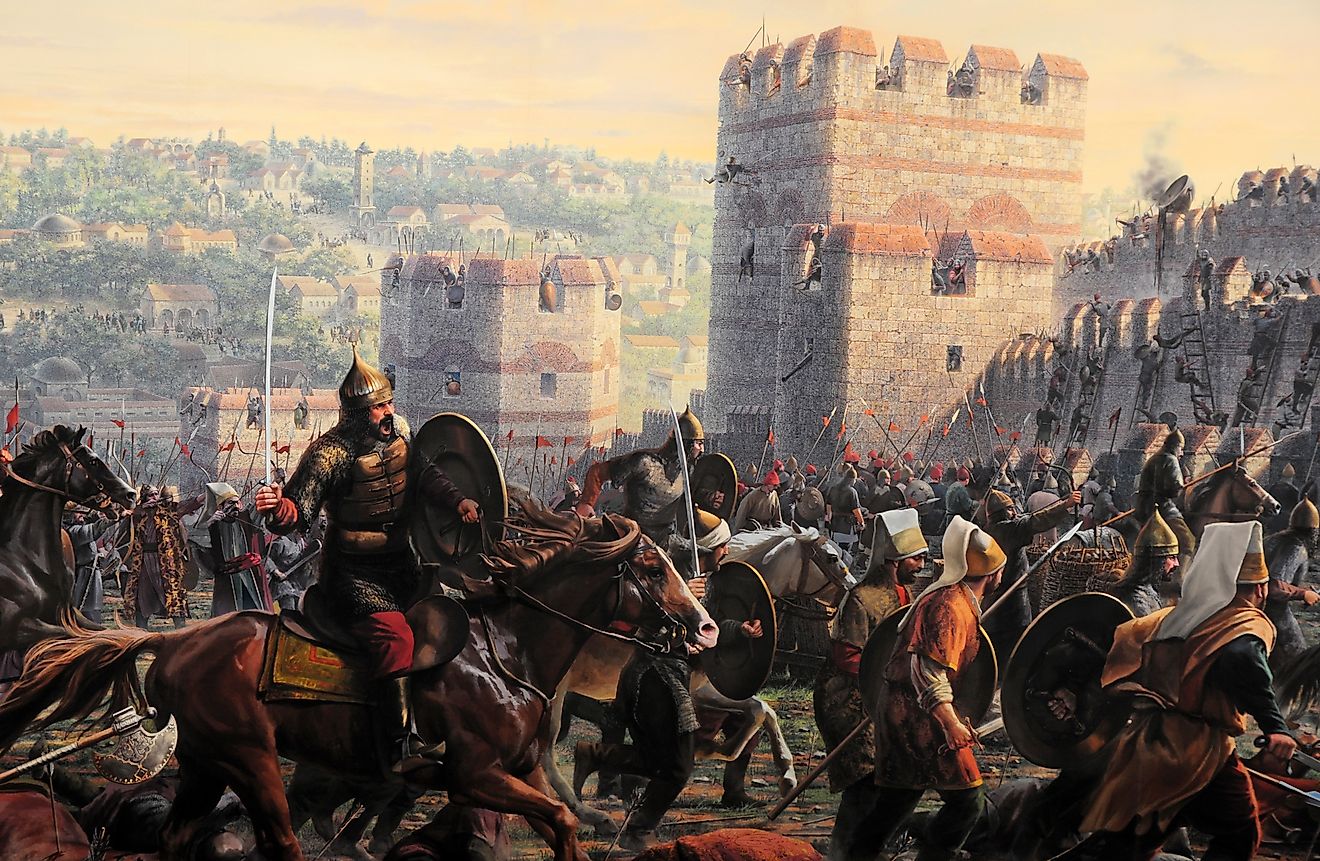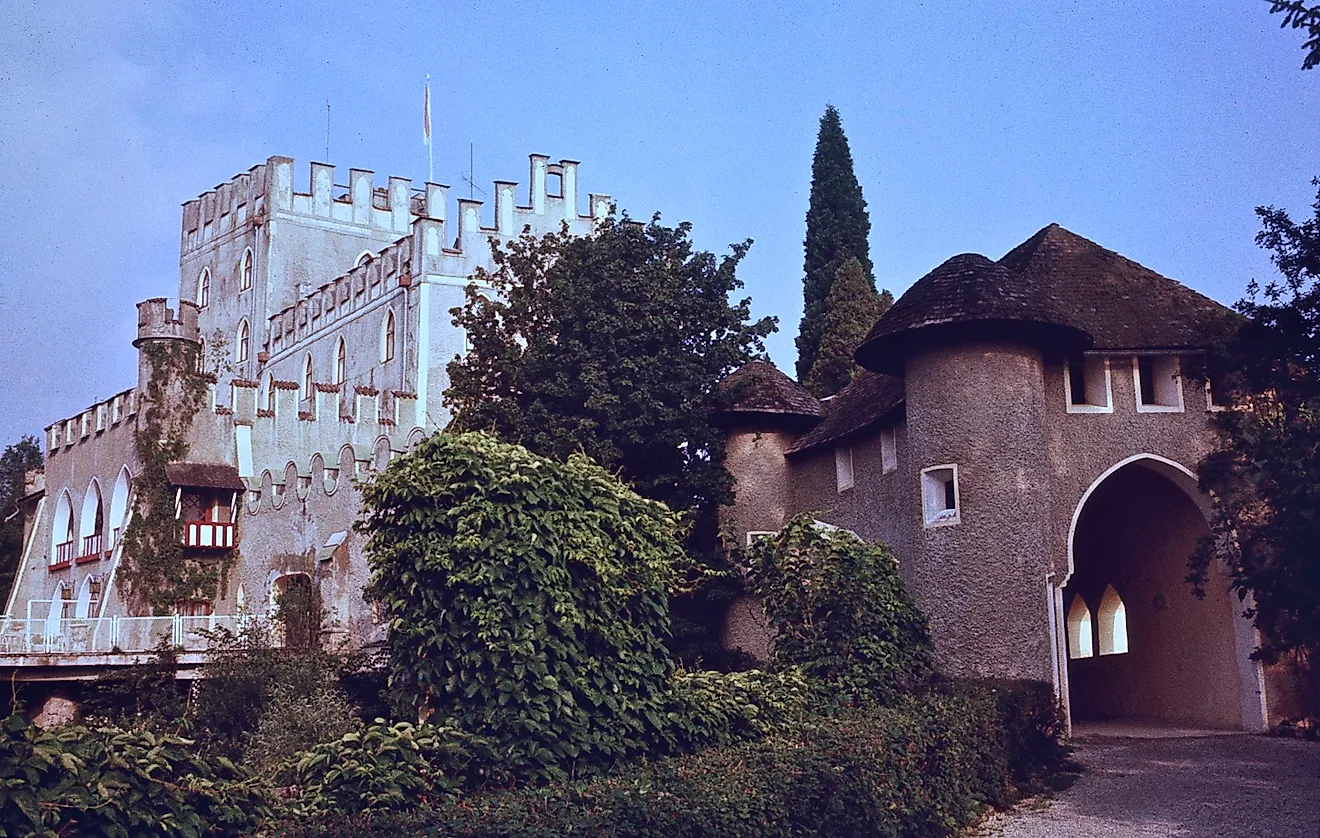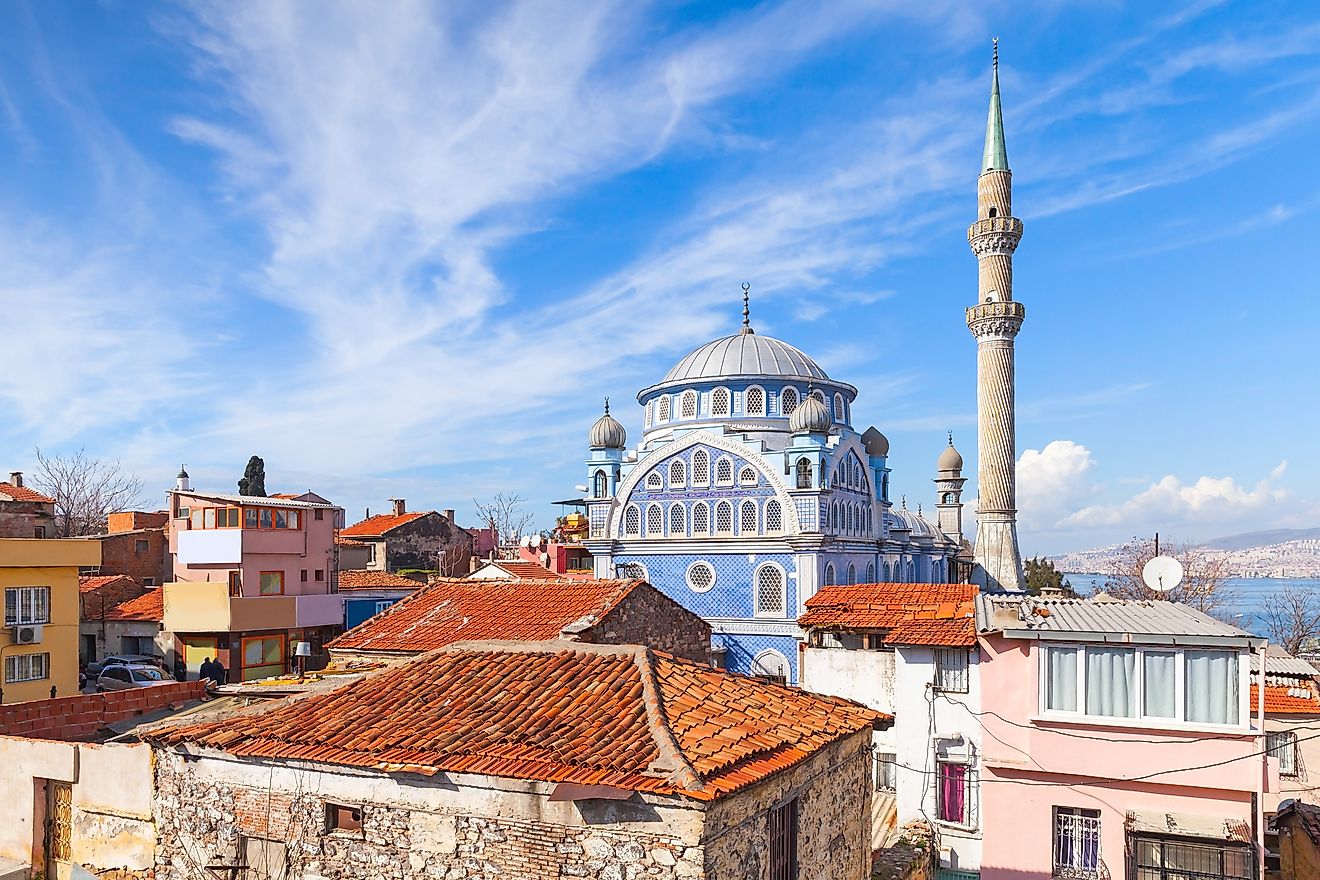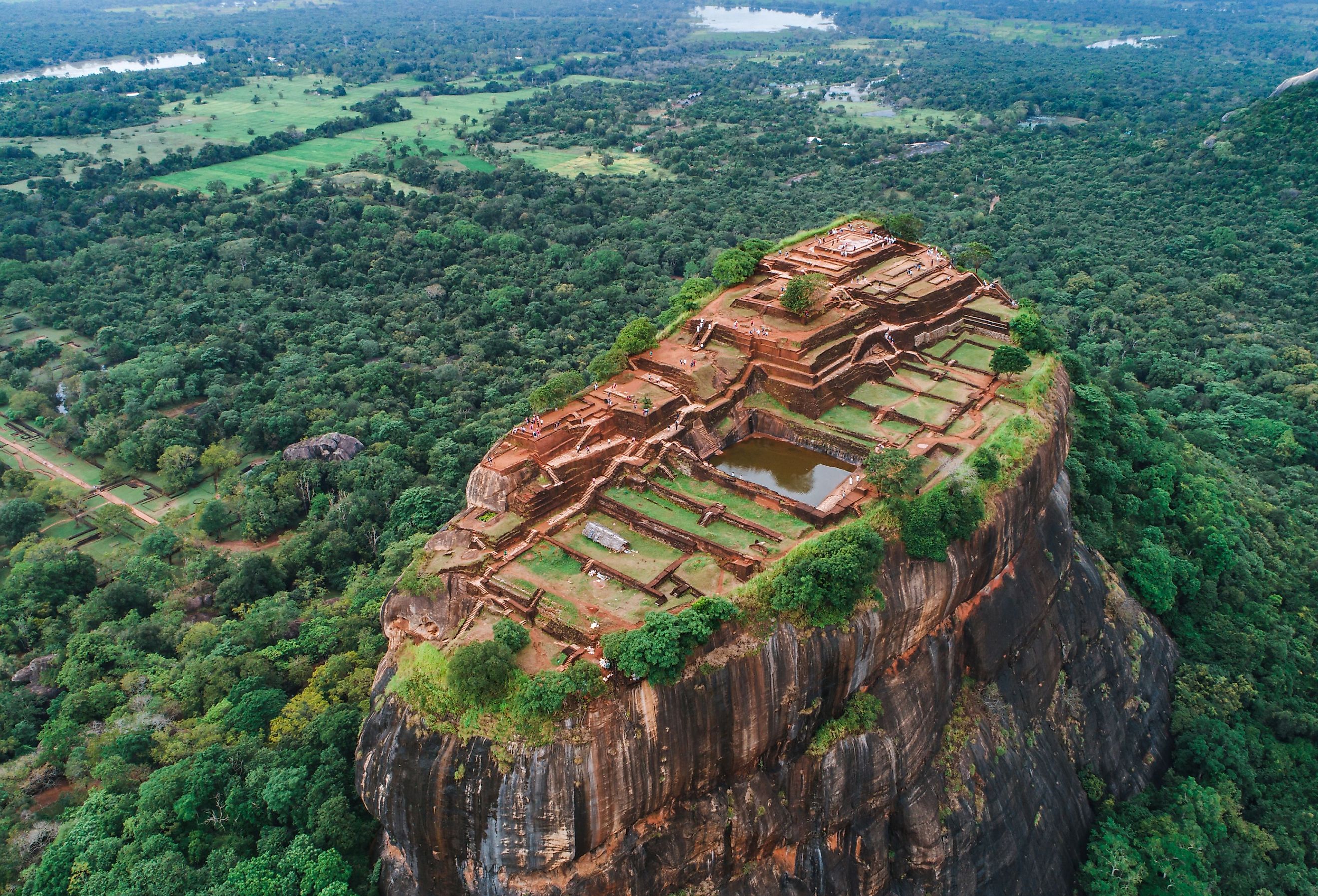
Lost City of Sigiriya
Located in the heart of the island of Sri Lanka is the lost city of Sigiriya. Built upon Lion Rock, it is an engineering marvel and one of the best examples of ancient urban planning in Asia. Even though Sigiriya translates as “little rock”, the monolith is a steep climb to the top, sitting 180 meters above the plains, and 349 meters above sea level. It was only the central political hub of Sri Lanka for a decade and a half, but the preserved ruins are an important historical site and a popular tourist attraction.
What is the Lost City of Sigiriya?
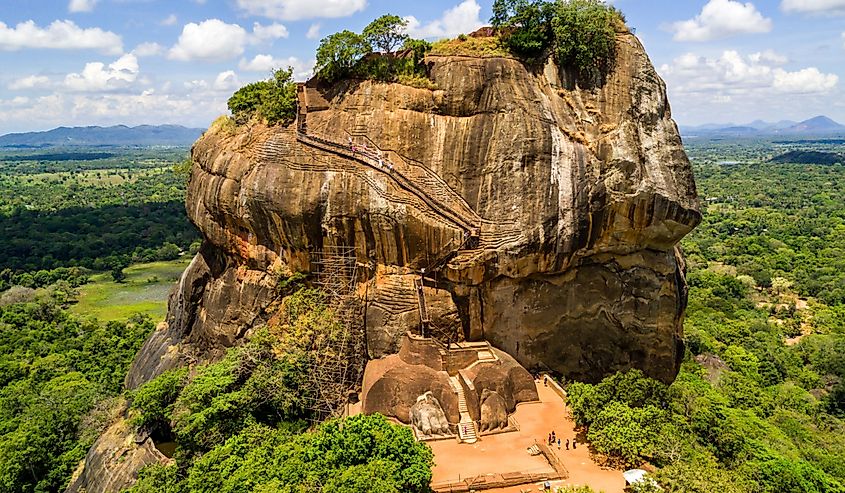
Constructed in the late 5th century CE during King Kasyapa’s reign, Sigiriya was a fortress. Built as a safeguard against enemies, the city covers several acres, spanning almost two miles from east to west, and over half a mile from north to south. The grounds surround the royal palace and include water gardens, botanical gardens, boulder gardens, a Buddhist monastery, ramparts, and moats.
The royal palace which sits on the summit extends almost four acres and comprises the lower palace, upper palace, and the palace garden which features impressive pools of water. The iconic brick-and-mortar lion’s paws at the base of the mountain, symbolizing ‘Lion rock’, are still intact, but the lion’s jaw eroded over time and is no longer visible. How and why they constructed these grounds on top of a mountain during ancient times is still a mystery; local legends say that the gods built the city as a palace in the sky.
History of the Lost City of Sigiriya
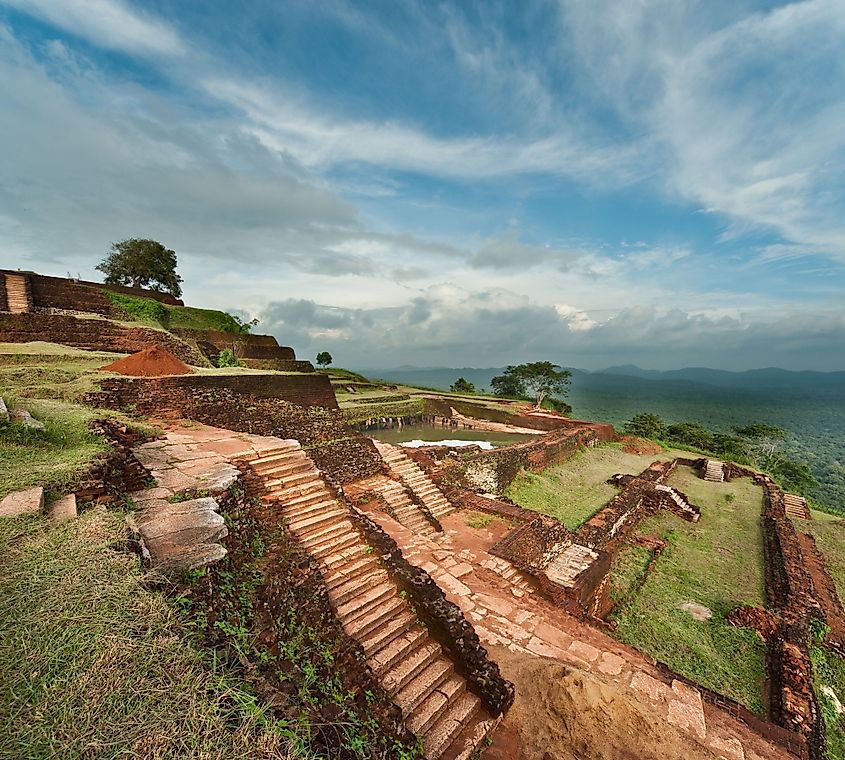
Famous Sigiriya Rock Fortress in Sri Lanka. Image credit CamPot via Shutterstock
Anuradhapura was the ancient capital of Sri Lanka and is still the capital of the North Central province. The parricidal King Kasyapa, however, fearing attack from the rightful heir, Mugulan, moved the capital to Sigiriya during his rule. In 495 CE, Mugulan brought an army and defeated Kasyapa, taking the throne and moving the capital back to Anuradhapura.
Constructed in the 3rd century BC, eight centuries prior to the city, the Buddhist monastery, located within the rock gardens remained a flourishing complex after the city fell. Under King Mugulan and his successor’s rule, the complex expanded to include; a chapter house, a Bodhghara, a stupa, and an image house. For over 600 years after Kasyapa’s defeat, monks inhabited this area until they too left. Lost to history from 1155 to 1831, the jungle swallowed the abandoned grounds.
What Happened to Sigiriya?
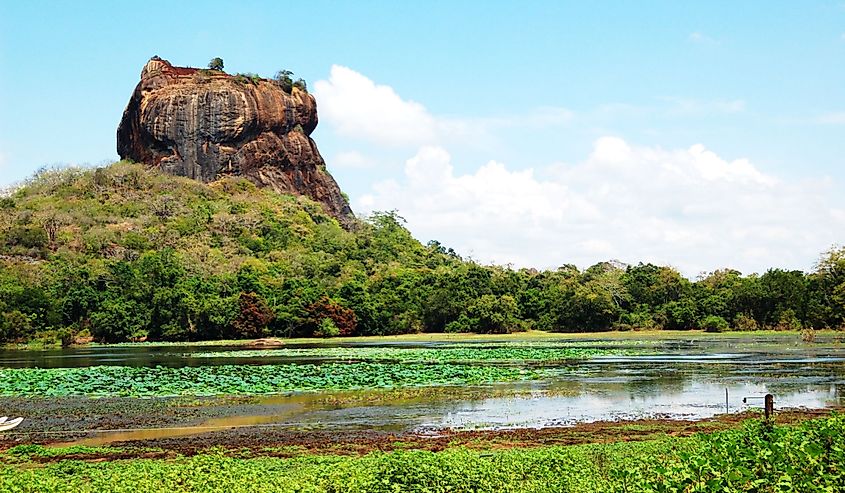
Upon re-discovery by Europeans in the early 1800s, historians and archeologists have worked tirelessly to protect the art and architecture on the grounds. In 1982, UNESCO named Sigiriya a World Heritage Site, increasing efforts at preserving this piece of history.
In 2009, the Sigiriya museum opened, a culmination of three decades of archeological research. It houses galleries with human skeletons, tools, jewels, paintings, sculptures, and more. Built as a tribute to Lion Rock itself, the trees and water are an integral part of the design, and the staircases and terraces resemble climbing the mountain.
Visiting Sigiriya
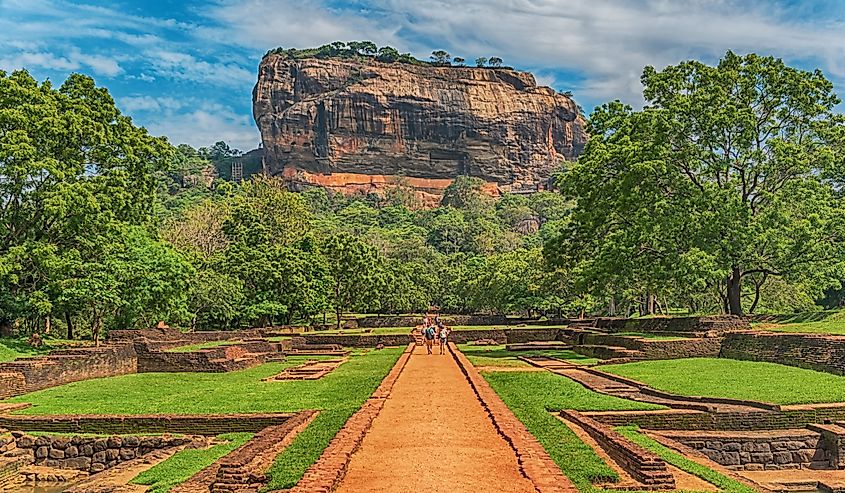
Located just over three hours from the capital, Colombo, the site is open to tourists every day of the year from 7:00 am to 5:30 pm. The nearest major town is Dambulla, about 30 minutes away, but you will find the local area surrounded by restaurants and hotels. Buses leave from Dambulla every 30 minutes, or you can drive by car and access the parking lot through the south gates. The cost of admittance for foreigners is 30 dollars USD, which will also gain you access to the museum.
Plan your trip early in the day before the temperatures soar and give yourself lots of time to explore the plethora of sights. The 1,250-step staircase, finishing with the iconic pass through the lion’s paws, itself can take two hours to climb and is just a small portion of the wonder that Sigiriya holds. You will want to save time to wander through the museum and many gardens, gaze at the mirror wall, and behold the magnificent frescos gallery.
The western face of the rock used to display more than five hundred of these lime-plaster murals, but they have faded over time. Inside the Cobra Hood Cave, however, colorful and stunning paintings of heavenly women, or women who visited the king’s court are still visible.
In Conclusion
The fact that the lost city of Sigiriya is still standing is a testament to the epic feat of engineering and architecture that went into its construction. Even though the city was short-lived as the capital, for over 4,000 years monks inhabited the sprawling city grounds. The site was an important Buddhist monastic complex and integral in the history of urban planning. Thanks to the work of archeologists and individuals working towards the preservation of historical sites, you can visit Sigiriya today and learn about its remarkable history.
